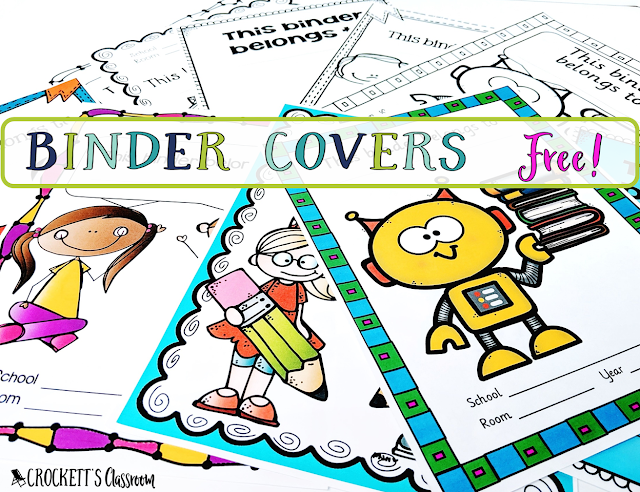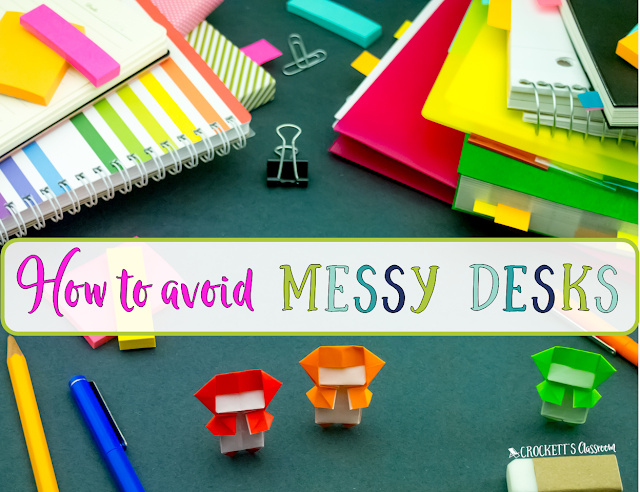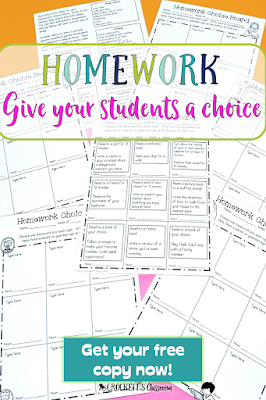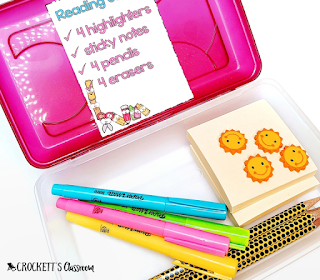Are you tired of students not being able to find that math paper you started yesterday and want to finish today? Then you should be using student binders. I can't say my students never lose a paper anymore, but it's pretty rare.
In my classroom, organization is a
priority. I keep my desk and materials
organized and I expect my students to keep their things organized, too. That’s why every student uses a binder to keep their papers organized. Most of the time, coming into third
grade is the first time they’ve used a binder.
So, one of our first tasks is to set up our binders. Here's how I do it.
Binder
Choices
I’ve found that 1 or 1.5 inch binders are
a good size. If you go much larger, they
take up too much space in the desk. I
like the binders with a clear pocket on the front so we can slide in a
cover. I'm able to order binders
from our district warehouse, so every student got the exact same binder. But you can also stock up during back-to-school sales, or put them on your class wish list.
If you have students bring in their own binders, I suggest you do not allow the Trapper Keeper binders. These binders are set up to hold pocket folders which are actually more difficult to keep organized. Papers need to be clipped into the three rings of a regular binder. If they're put in folder pockets, they get wrinkled, torn, and can fall out.
The dividers with plastic
tabs that let you slide in a label work best. The slide in tabs come with a sheet of blank tabs that can be put through a printer to customize with the labels you
want.
These are the tabs I usually have in my binders:
--V.I.P. Very Important Papers. This section holds pages with the class
or school information. The papers in
this section usually stay all year long.
--Subject tabs There is a tab for each subject area;
reading, language, spelling, math, science, and social studies.
The packet of dividers usually has eight dividers. That should be plenty to set them up the way you want.
The packet of dividers usually has eight dividers. That should be plenty to set them up the way you want.
Pockets
The pockets inside the front and
back cover are used for the communications sent home and then returned to
school. The front cover is labeled Home
and the back pocket is labeled School.
So, anything that needs to be seen by parents is put in the front
pocket. Anything that needs to be
returned to school should be placed in the back pocket. To tell the truth, the back pocket is often
ignored and all papers coming back to school are usually put in the front
pocket. I don't get too picky about that, as long as the papers get back and forth safely.
Using the Binders
Once you have everything ready, it’s time to show your students how to use the binders. Don’t be surprised if this is the first time your kids have actually used a binder. In fact, you will probably need to show them is how to open the rings. The best way is to press the top and bottom openers (I don’t know the official name for those things!) If they pull the rings apart, they will eventually become misaligned and not close properly.
Once you have everything ready, it’s time to show your students how to use the binders. Don’t be surprised if this is the first time your kids have actually used a binder. In fact, you will probably need to show them is how to open the rings. The best way is to press the top and bottom openers (I don’t know the official name for those things!) If they pull the rings apart, they will eventually become misaligned and not close properly.
To save time I usually have the
dividers already in the binders before I hand them out. This way, I’m sure all the dividers are put
in correctly so the divider with the first tab is on top. But, I let the kids slide the labels into the
tabs. Most of them can do it, but a few
will need extra help.
As they are adding the labels,
explain that papers for each section go BEHIND the tab. They must “open” the section by holding the
tab and moving it from the right side to the left side of the binder. It’s just like opening a book. You open a book by moving the cover to the
left. For some reason, this is very
confusing for some students. During the
first couple of weeks I go around and double-check that the paper I've just asked them to put away is behind the correct tab.
I created a set of binder covers for you! There are five designs, both bw and color. There's also a template for printing the tab labels. (Click on the image)
Click on the image to download this set of binder covers. This is a PowerPoint file which is editable when it's open in PowerPoint. (IT IS NOT EDITABLE WHEN IT OPENS IN YOUR BROWSER.)
I created a set of binder covers for you! There are five designs, both bw and color. There's also a template for printing the tab labels. (Click on the image)
Click on the image to download this set of binder covers. This is a PowerPoint file which is editable when it's open in PowerPoint. (IT IS NOT EDITABLE WHEN IT OPENS IN YOUR BROWSER.)
Daily Use
The main reason for using a binder is so students can keep important pieces of paper and find them later. For example, If we start working on a reading assignment and don’t have time to finish, students put it in their binder and we get it out the next day. Binders drastically cut down on crumpled, torn, or lost papers.
Students don't keep every paper in their binder. If we did the binder would soon be stuffed so full it wouldn't close! My general rule is to keep ongoing work, reference pages we'll use again, and graded assignments. Practice pages we don't need anymore go in the Home pocket and hopefully are taken out at home.
I require that all graded papers stay in the binder until the end of the quarter. That way, parents can see them and if there is ever a question about a grade, the assignment is right there. It's also handy for student to look back at their work to see their progress.
Tips:
-Make it a routine to tell students
where to put papers in their binders. If
you want a math paper kept, tell them to put it in the math section of their
binder. If it's just a practice paper that doesn't need to be kept, tell them to put it in the Home pocket to be taken out that night. Don’t assume they know where to
put something.
-Check frequently to make sure
students have cleaned out the home/school pockets. You don’t want to miss any notes from
parents. Some parents don't take out the class or school announcements or flyers that are meant to be kept at home.
-Depending on my desk arrangement I had table or row captains. One of their jobs is to check to make
sure all students in their group have placed a paper in the correct place. It saves me a lot of time. Plus, kids love to help each other.
-If I have a student who is especially challenged with staying organized, I assign a buddy to help
him/her.
-Have a thorough cleaning out and reorganizing at the end of each quarter. I have students take out everything we don't need anymore. The graded papers can be stapled and sent home. This way you'll start the new quarter with a fresh binder.
Do you have any special ways to keep your student binders organized? Share your fresh ideas.
-Have a thorough cleaning out and reorganizing at the end of each quarter. I have students take out everything we don't need anymore. The graded papers can be stapled and sent home. This way you'll start the new quarter with a fresh binder.
Do you have any special ways to keep your student binders organized? Share your fresh ideas.


































